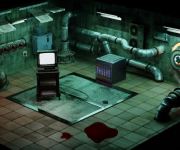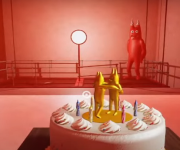Garten of Banban 10
Garten of Banban 10 continues the player’s descent through the facility, now reaching a level that appears untouched since its original closure. The surroundings feel less like a school and more like a holding zone, with large unused machinery, dark corridors, and signs of emergency evacuation. The player must rely on navigation, memory, and new tools to move through restricted areas where standard rules no longer apply. This chapter removes any illusions of safety, focusing heavily on unexpected choices and layered space.
Interaction and Progression
This time, progression is not strictly linear. The player is offered a hub system, allowing them to revisit earlier zones with new access. This opens optional challenges and changes the way puzzles are approached. Visual indicators become subtler, and the game rewards players who observe environmental changes over time. The mascots are less present at first but return in new forms that are tied to the storyline and require different behavior to survive.
Major Additions in This Chapter
Several systems and mechanics are introduced that change how players experience the game:
- A communication system that lets the player listen to fragments of archived staff recordings
- Variable light mechanics that influence which doors remain accessible
- Non-combat stealth sections requiring avoidance instead of confrontation
- Timed events triggered by earlier decisions
- A companion object that records important events
These mechanics encourage players to think ahead, plan routes, and revisit their choices as the game continues.
Narrative Shift and Emotional Tone
The story shifts focus from the facility’s origin to the motives of those who funded it. While the previous entries hinted at malfunction and decay, this chapter shows the facility functioning as intended—for reasons that are not fully explained. There are documents and environmental cues that suggest the player was once part of the system, possibly even involved in the mascots’ development. The idea of memory manipulation becomes central, with moments that suggest previous playthroughs or forgotten timelines.
Garten of Banban 10 ends without a clear resolution. Instead, it creates uncertainty around the purpose of the player’s journey. Characters become symbols, gameplay becomes metaphor, and the story raises questions instead of closing them. This shift pushes the series into a new direction, one that combines logic, pattern recognition, and quiet tension instead of loud encounters.







































































